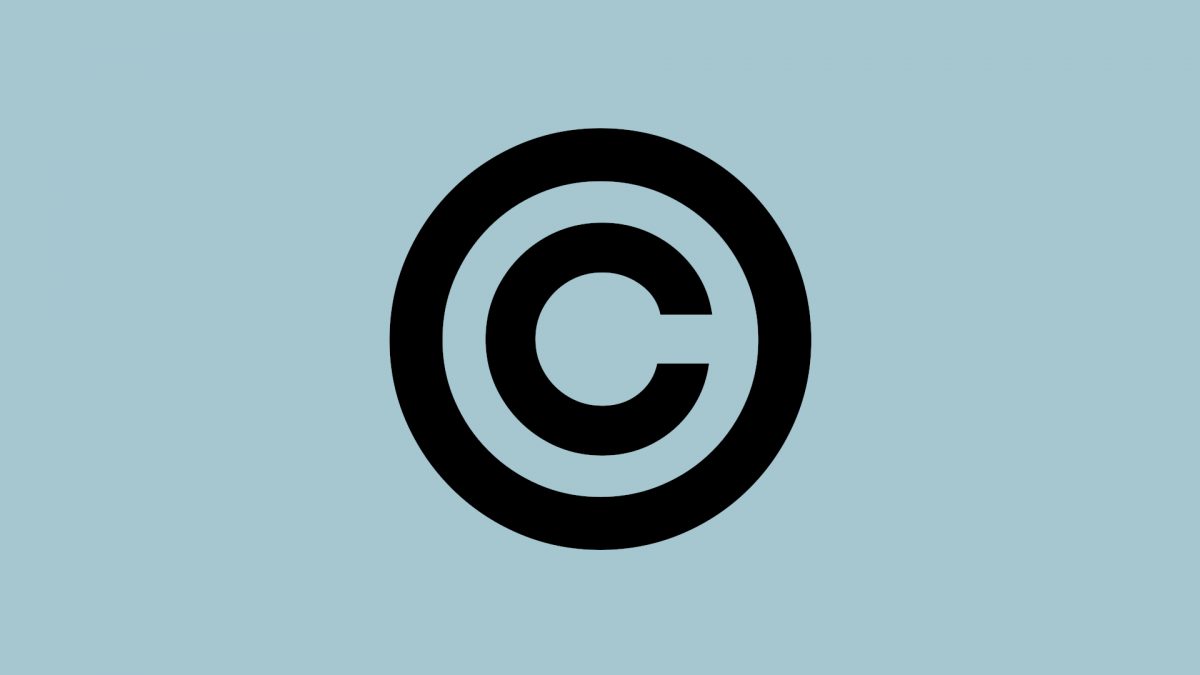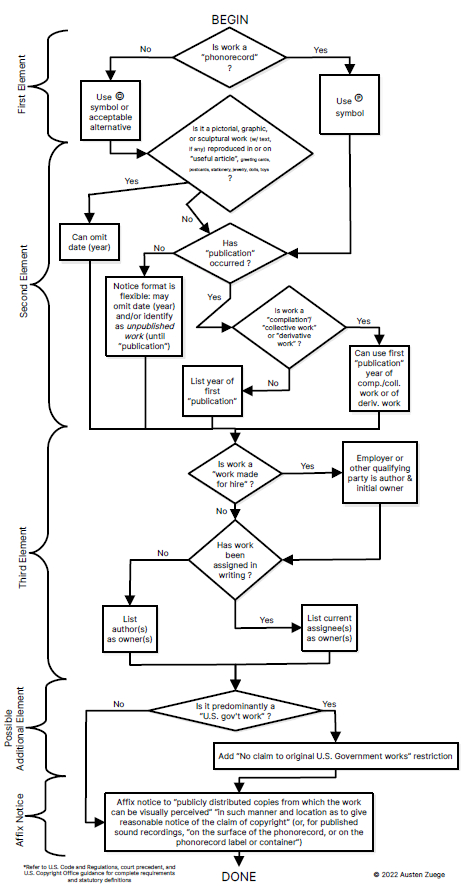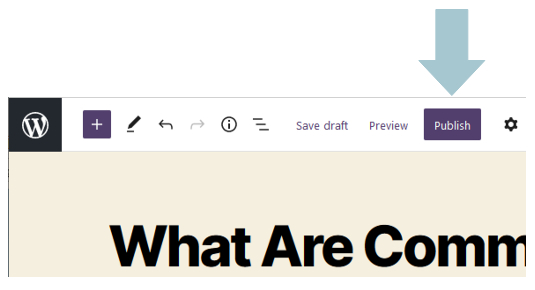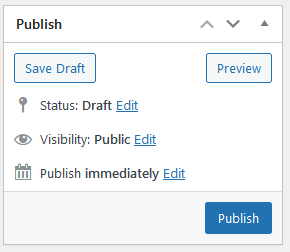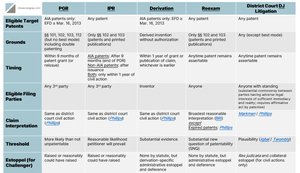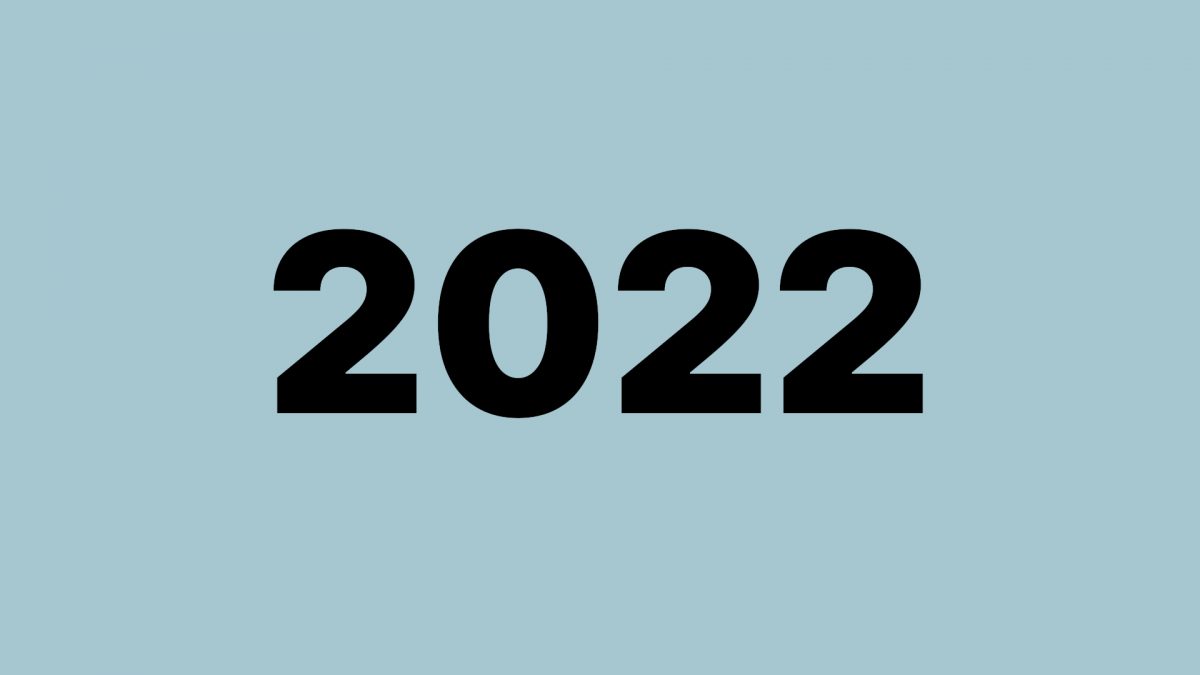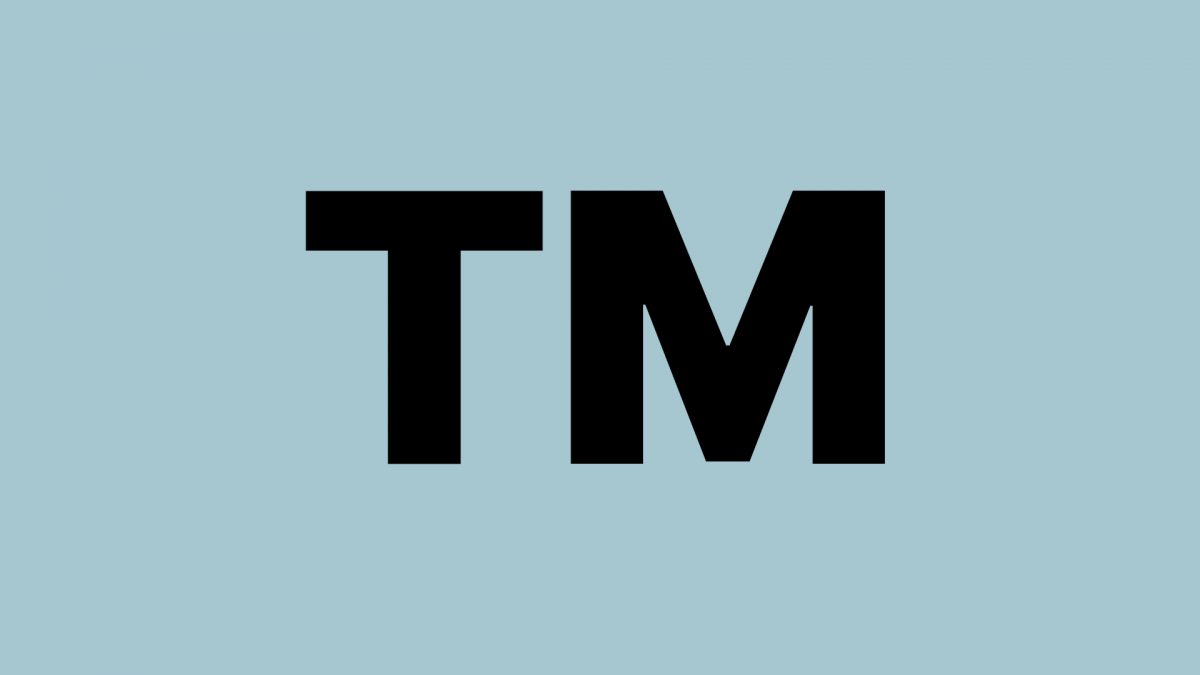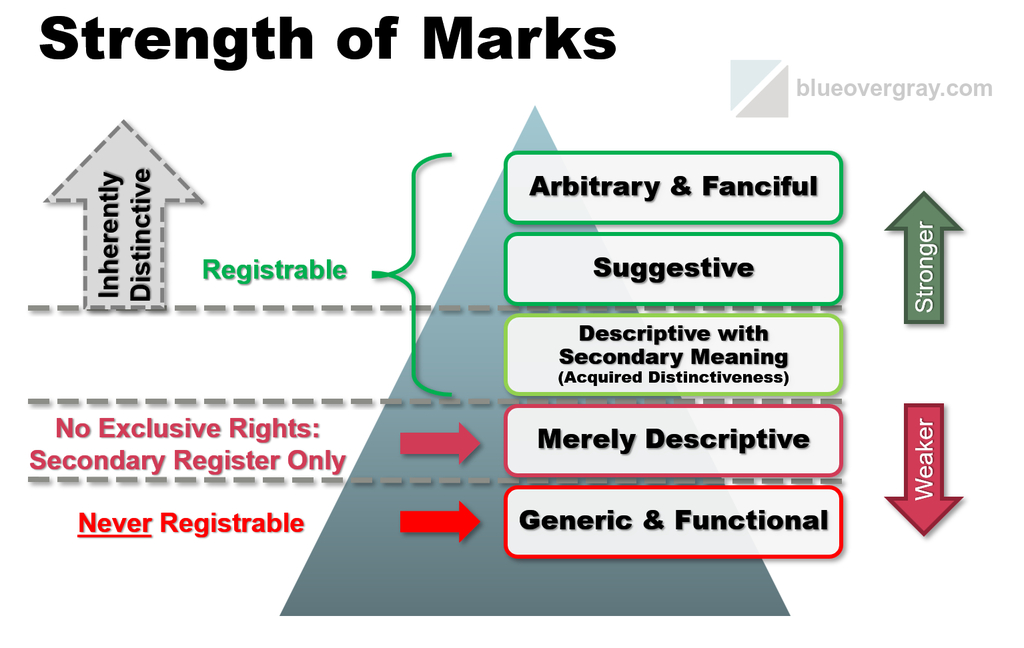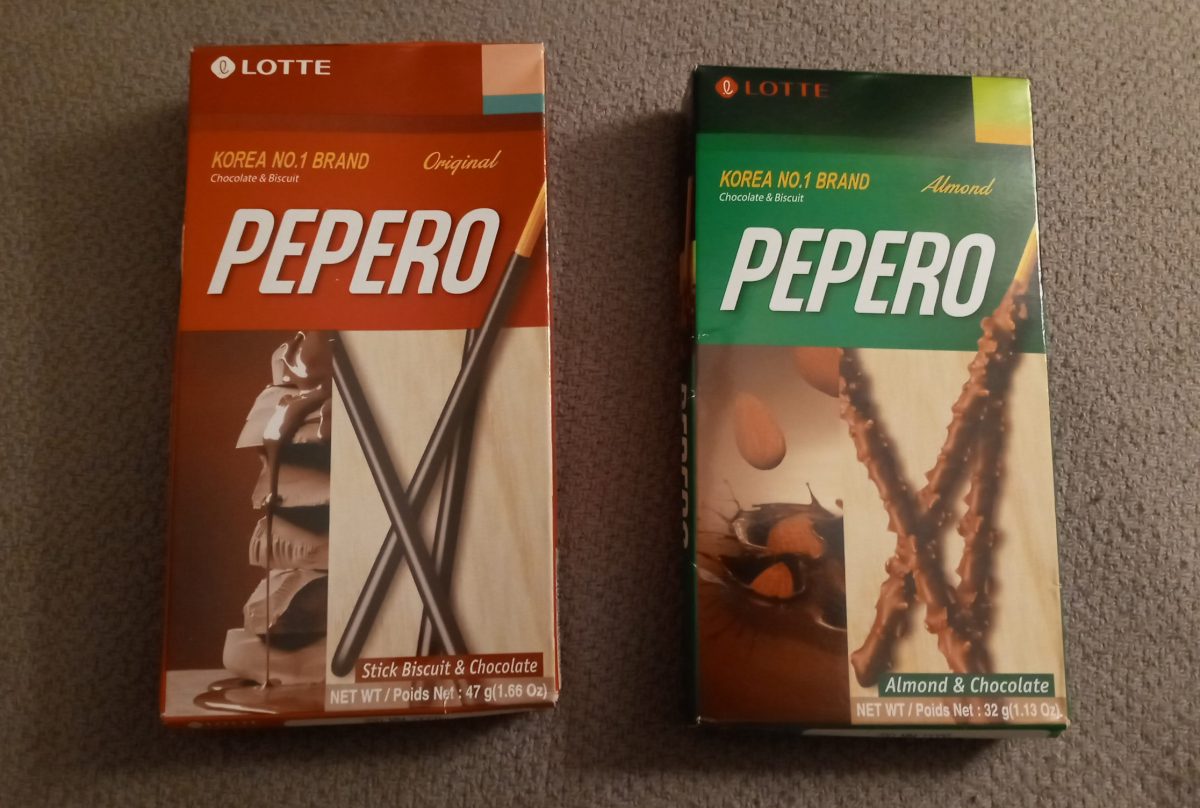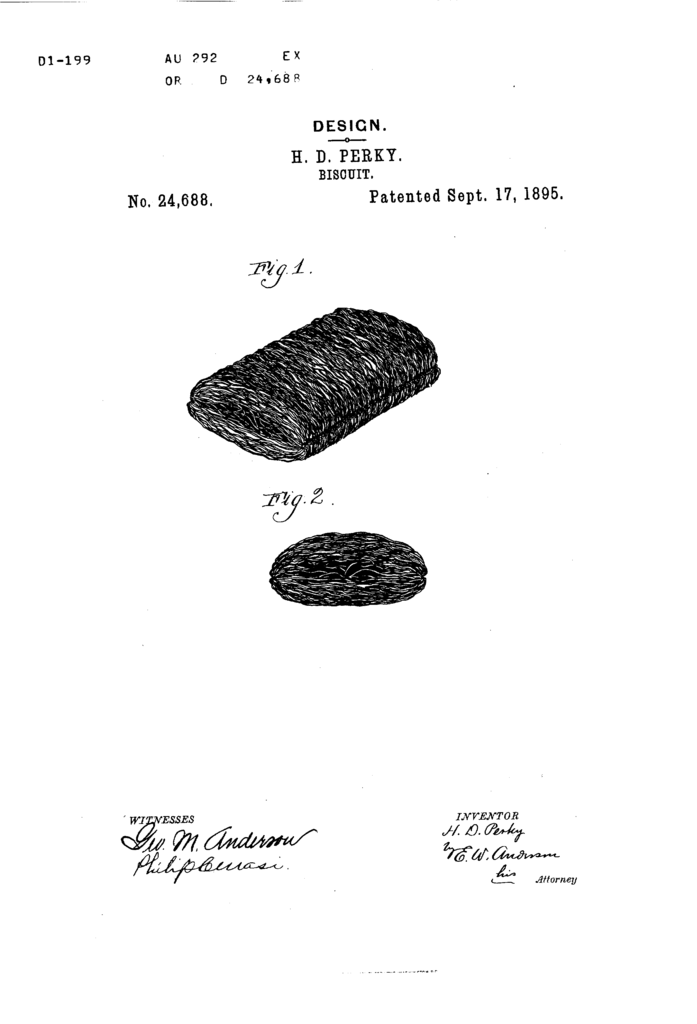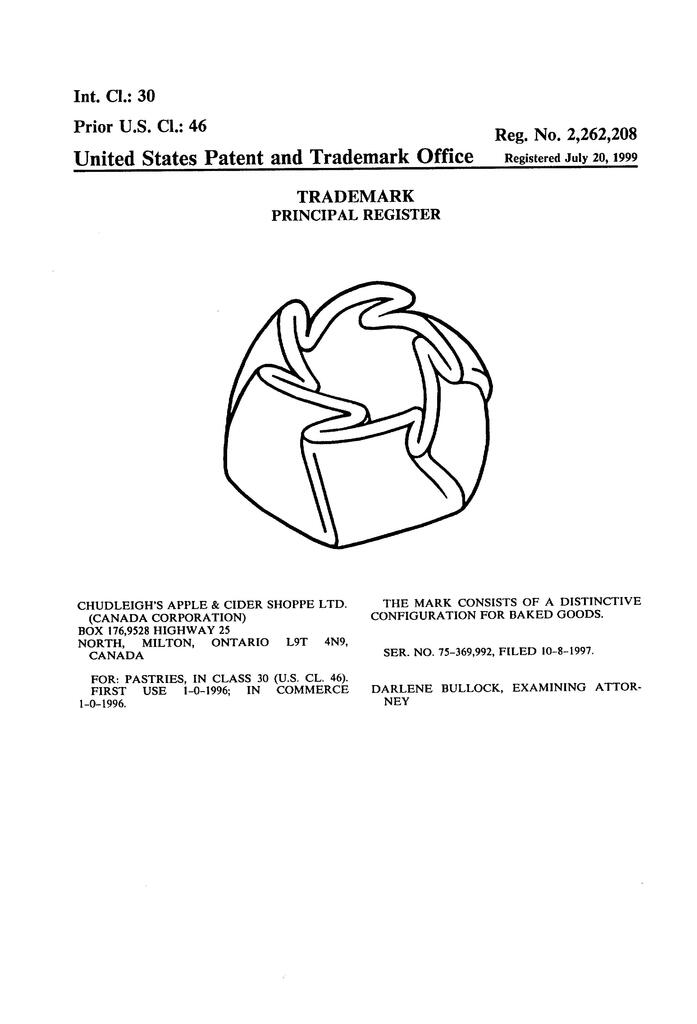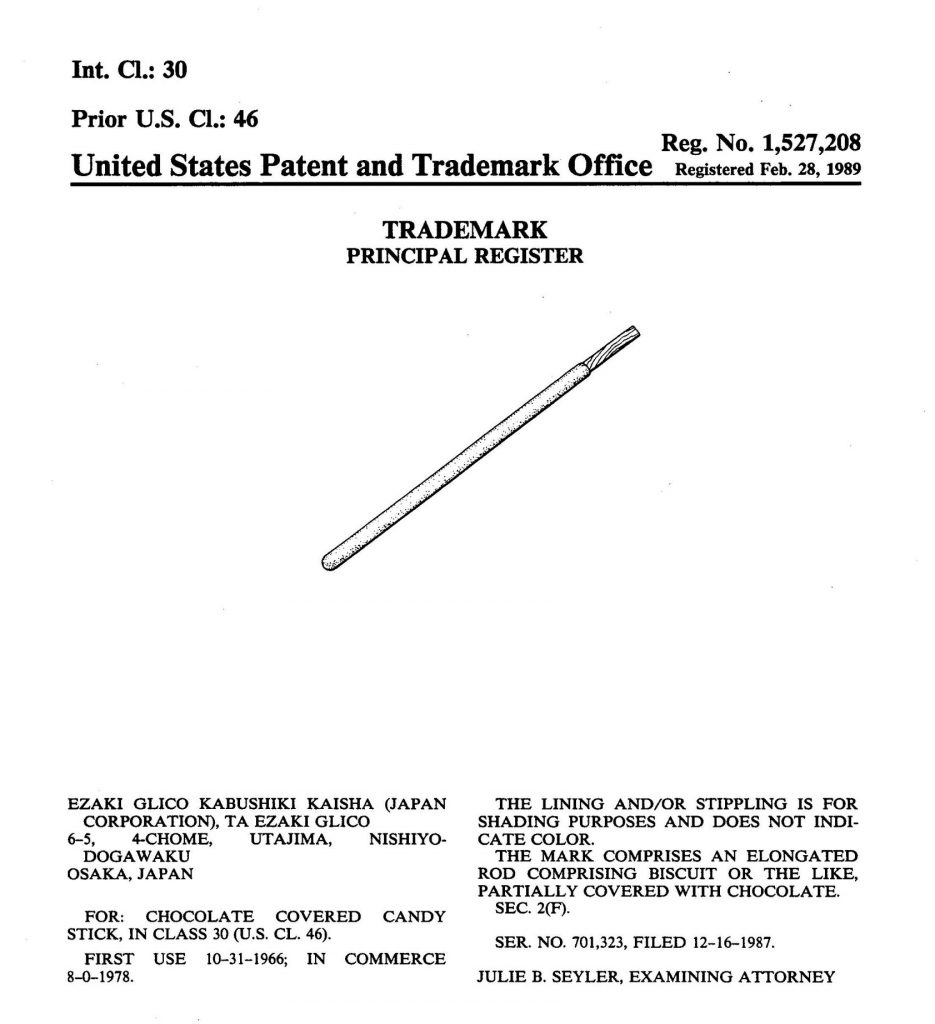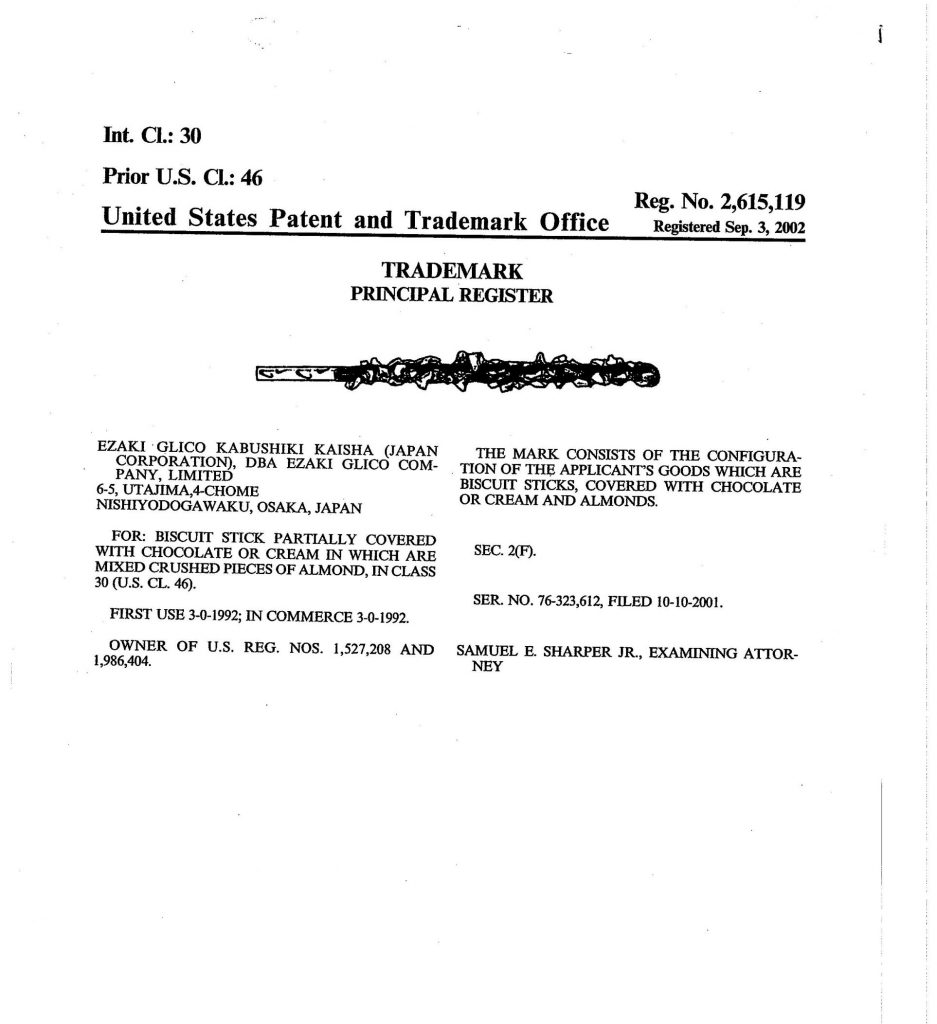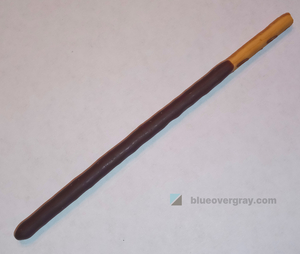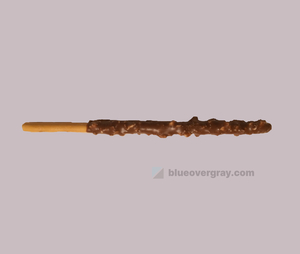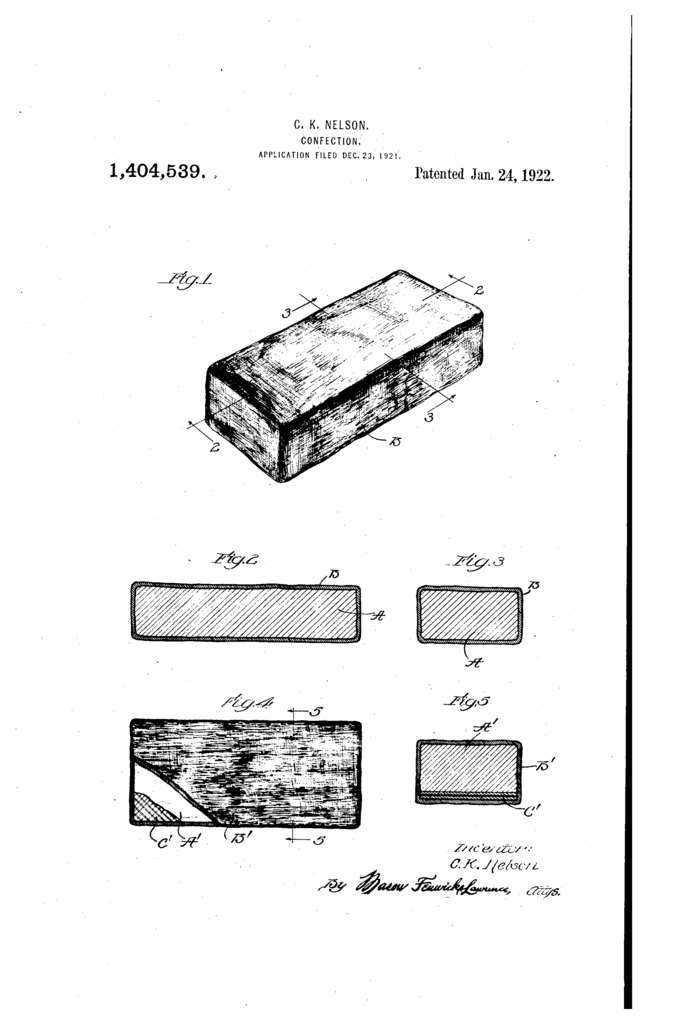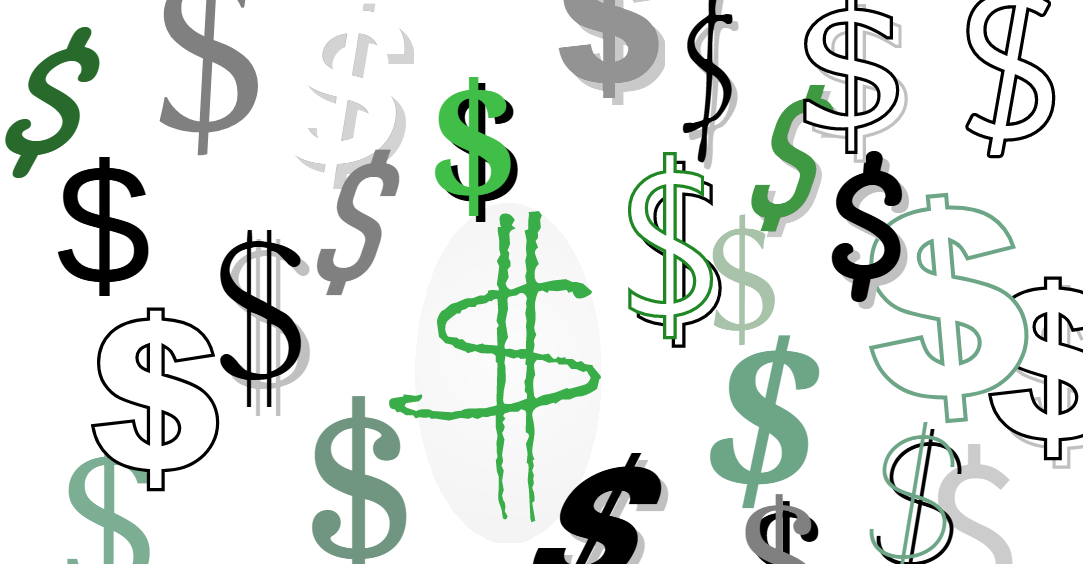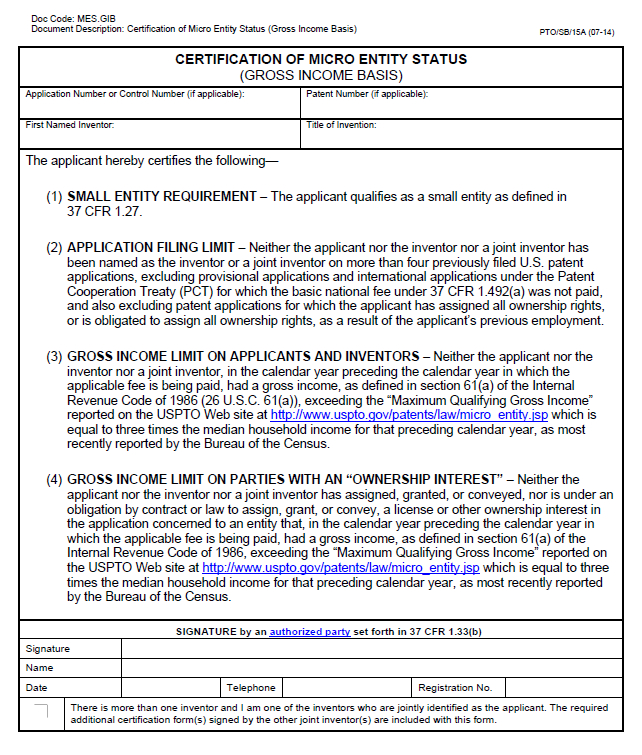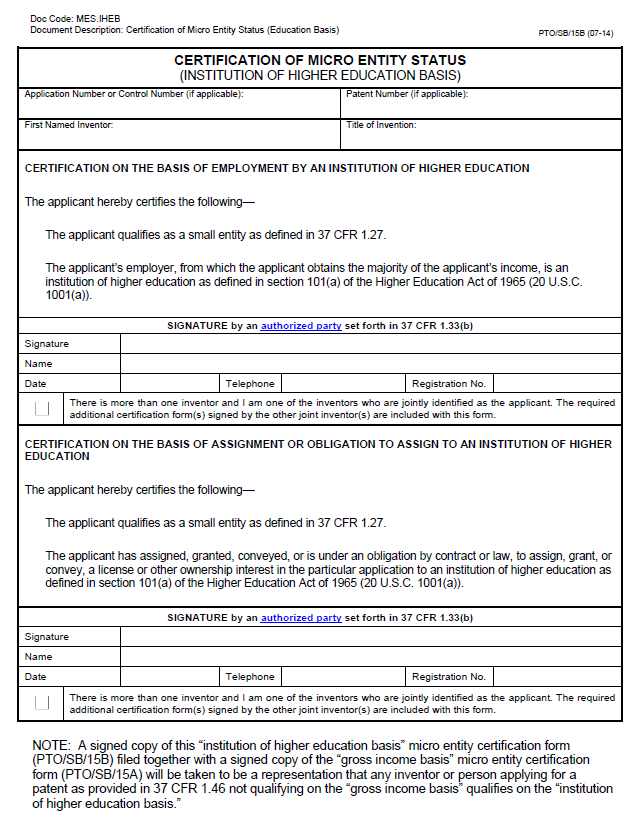Is it possible for a U.S. design patent claim to include a negative limitation? It does not appear that courts have explicitly addressed this question. That is partly due to emphasis on design patent claims and infringement analyses revolving around the design as a whole, which can lead to rather conclusory decisions. But the question posed here is whether a claimed ornamental design as a whole can contain within it one or more “negative limitations” that effectively indicate the absence of some ornamental aspect, as opposed to indicating the positive (or affirmative) presence of an ornamental aspect. Certain past cases have touched on similar issues without specific reference to “negative limitations” in the sense that term is used with regard to utility patent claims.
Consider a design patent claim that shows as part of the overall ornamental design a flat surface, that is, a solid planar surface that is plain and uninterrupted. Does such a depiction include a negative limitation of sorts that excludes the presence of ornamentation on the surface? That is, does it give rise to a potentially significant overall difference when comparing a perforated surface or a surface that has substantial non-planar texturizing surface ornamentation? The same questions might arise, for instance, when a claimed design depicts only a single element (such as a single rounded corner, single support bar, single hole, etc.) but the accused product includes more than one of those elements.
In general, design patent infringement analysis involves two steps: (1) claim construction and (2) comparison of the properly construed claim to the accused product. Elmer v. ICC Fabricating, Inc., 67 F.3d 1571, 1577 (Fed. Cir. 1995). Theoretically, at least, questions about “negative limitations” in design patents could potentially arise in either of those two steps.
While, certainly, a jury can always reach an ultimate infringing/non-infringing conclusion, in the binary sense, based on the particular and specific facts at hand in any given case. But the topics at hand here are how courts should treat the legal issues surrounding how a finder of fact might be presented with design patent infringement questions where negative limitation issues are present, and also how courts making dismissal (Rule 12(b)(6)), summary judgment, judgment on the pleadings, judgment as a matter of law (JMOL), or appeal decisions can explain their reasoning under the ordinary observer test when negative limitations may be present.
Negative Limitations in Design Claim Construction
Design patent infringement analysis begins with claim construction. Although claim construction is also the first step in utility patent infringement analysis, design patent claim construction differs from that for utility patents in some important ways.
A patentable design “gives a peculiar or distinctive appearance to the manufacture, or article to which it may be applied, or to which it gives form.” Gorham Co. v. White, 81 U.S. (14 Wall.) 511, 525 (1871); see also Samsung Elecs. Co., Ltd. v. Apple Inc., 580 U.S. ___, 137 S. Ct. 429, 432-33 (2016). This means design patent claim construction must be adapted to the pictorial setting. Crocs, Inc. v. Int’l Trade Comm’n, 598 F.3d 1294, 1302 (Fed. Cir. 2010). In that sense, the Federal Circuit has said that “[d]epictions of the claimed design in words can easily distract from the proper infringement analysis of the ornamental patterns and drawings.” Id.; see also Dobson v. Dornan, 118 U.S. 10, 14 (1886) (a claimed design “is better represented by the photographic illustration than it could be by any description, and a description would probably not be intelligible without the illustration.”).
The Federal Circuit has cautioned that detailed verbal claim constructions increase “the risk of placing undue emphasis on particular features of the design and the risk that a finder of fact will focus on each individual described feature in the verbal description rather than on the design as a whole.” Egyptian Goddess, Inc. v. Swisa, Inc., 543 F.3d 665, 680 (Fed. Cir. 2008) (en banc). For such reasons, the level of detail to be used in describing the claimed design is a matter within a court’s discretion, and a court is not obligated to issue a detailed verbal description of the design if it would not be helpful. Id. at 679-80. Yet a court may use claim construction to help guide the fact finder through issues that bear on claim scope. Id. at 680.
Although not always at issue in every case, design patent claim construction can address prosecution history estoppel and prosecution history disclaimer. See Egyptian Goddess, 543 F.3d at 680. In general, the doctrine of prosecution history estoppel prevents a patentee from “recaptur[ing] in an infringement action the very subject matter surrendered as a condition of receiving the patent.” Festo Corp. v. Shoketsu Kinzoku Kogyo Kabushiki Co., Ltd., 535 U.S. 722, 734 (2002). It requires that “the claims of a patent be interpreted in light of the proceedings in the [US]PTO during the application process.” Id. at 733. The Federal Circuit has specifically held that prosecution history estoppel applies to design patents too. Pac. Coast Marine Windshields Ltd. v. Malibu Boats, LLC, 739 F.3d 694, 702 (Fed. Cir. 2014).
However, for design patents, unlike with utility patents, “the concepts of literal infringement and equivalents infringement are intertwined.” Id. at 700-01. Because it is the drawings of the design patent that provide the description of the invention, courts “look at the requisite drawings in design patents to determine whether a surrender has occurred.” Id. at 702. Estoppel arises when a narrowing amendment is made to satisfy any requirement to secure the grant of the patent, including amendments to avoid prior art or resulting from a restriction requirement. Id. at 703-04; see also Advantek Marketing Inc. v. Shanghai Walk-Long Tools Co., 898 F.3d 1210, 1216-17 (Fed. Cir. 2018).
In the Pacific Coast Marine Windshields case, a design application (for U.S. Des. Pat. No. D555,070) originally included drawings depicting—and claiming—multiple embodiments of a boat windshield. As reproduced below, the various originally-claimed embodiments showed the claimed windshield design with different vent hole configurations and also showed claimed designs that included and excluded a hatch on the front of the windshield. The examiner issued a five-way restriction requirement, identifying five distinct groups of designs as windshields with:
- four circular holes and a hatch (FIG. 1);
- four circular or square holes and no hatch (FIGS. 7 and 12);
- no holes and a hatch (FIG. 8);
- no holes and no hatch (FIG. 9); and
- two oval or rectangular holes and a hatch (FIGS. 10 and 11).
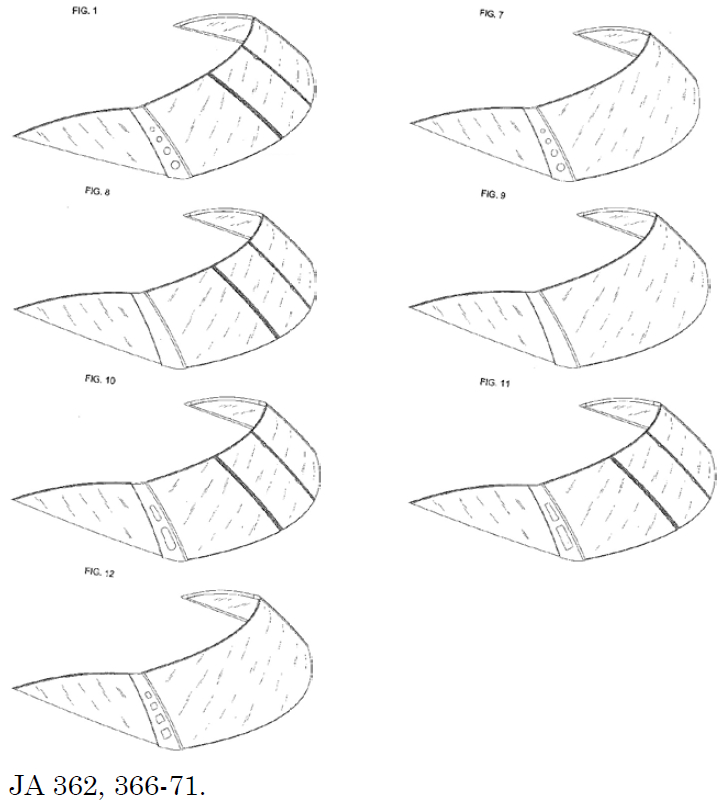
In that sense, the examiner indicated that many of the different embodiments (but not all of them) represented different design inventions. In response, the patentee removed alternate embodiments, thus deleting those alternate embodiments from the scope of the claim. That prosecution history had significant implications to the scope of the claim in the granted design patent before the court (D555,070). Incidentally, the patentee chose to file only one subsequent divisional application to the “no holes and a hatch” embodiment (that became U.S. Des. Pat. No. D569,782), apparently without pursuing any other of the original alternate embodiments—though a continuation application (that became U.S. Des. Pat. No. D593,024) based off the divisional was also later filed for a partial design to only the vertical corner posts with no vent holes (with the windscreen portions unclaimed, thus potentially avoiding hatch vs. no hatch questions).
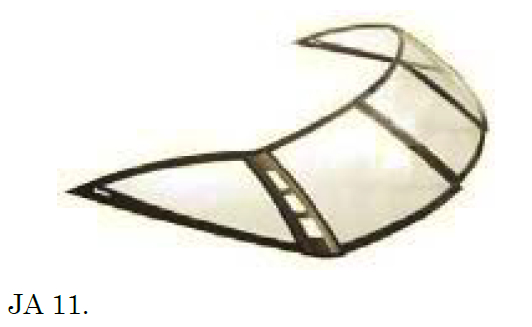
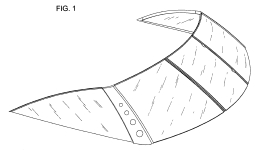
Noting that treatises and prior district court decisions had said similar things in the past, the Federal Circuit ruled that surrender of claims to the alternate designs was for reasons of patentability that caused prosecution history estoppel to attach. Pac. Coast Marine Windshields, 739 F.3d at 702-04. However, because the accused windshield product’s design had three vent holes (see above) but the patented design had four vent holes (see FIG. 1 above) and the surrendered embodiments/designs had only two vent holes (see original FIGS. 10 and 11 above), summary judgment of non-infringement was reversed and the case was remanded to the district court for further proceedings. Id. at 704-05. In other words, without reaching a definitive infringement/non-infringement decision, the patentee was barred from arguing that the design patent’s claim covered a two-hole design (or any other surrendered embodiments) but was still able to argue that a three-hole design might be covered because there was no surrendered three-hole embodiment in the original drawings. (The Federal Circuit decision did not address potential differences in the horizontal/angled frame or trim aspects of the accused design as part of the overall appearance analysis). After remand, and denial of subsequent summary judgment cross motions (which included inventorship disputes, and non-patent issues), the parties eventually settled.
Generally similar negative limitation issues have arisen in utility patent cases. For example, the Spine Solutions case involved questions of claim construction and prosecution history estoppel for a utility patent. Claim 1 of the patent in question recited “a single anchor on each of the upper surface of the upper part and the lower surface of the lower part . . . .” The relevant claim construction implicitly regarded the “single anchor” recitation as including a negative limitation, that is, requiring one anchor having the recited characteristics but excluding the presence of more than one anchor. There was no infringement by the accused device, which had two anchors rather than a “single” anchor as claimed. The Federal Circuit reasoned as follows:
“We agree with [the accused infringer] Medtronic that the court erred in determining that [the accused] O-Maverick [device] literally infringes claims 1 and 2. The [district] court construed ‘single anchor’ to mean, in relevant part, that ‘[t]he upper and lower surfaces of the implant each have one anchor having the characteristics recited in the last paragraph of [claim 1].’ Claim Construction Order, 2008 WL 4831770, at *14, 2008 U.S. Dist. LEXIS 116648, at *43 (emphasis added). A simple observation of [the accused] O-Maverick [device] confirms that the implant has two anchors on each of the upper and lower pieces, not one. The anchors are separated by a one-millimeter gap that extends all the way to the base of the implant; at no point are the two anchors joined or connected in any way. O-Maverick clearly has two anchors on each piece, not a ‘single anchor’ as recited by claims 1 and 2. Therefore, we hold as a matter of law that [the accused] O-Maverick [device] does not literally infringe claims 1 and 2.
“During prosecution, applicants expressly distinguished the claimed invention over the ‘477 patent by asserting that ‘a reference disclosing two anchors does not disclose a device affirmatively claiming a single anchor… reciting a negative limitation in the form of a single element is not disclosed by prior art which teaches more than one element.’ J.A. 17524. This is a clear disclaimer of claim scope, and prosecution history estoppel therefore bars [the patentee] SSI from arguing that a two-anchor device is equivalent to the claimed implant. Because we hold that [the accused] O-Maverick [device] is a two-anchor device, SSI cannot argue that O-Maverick infringes claims 1 and 2 under the doctrine of equivalents.”
Spine Solutions, Inc. v. Medtronic Sofamor Danek USA, Inc., 620 F.3d 1305, 1316-17 (Fed. Cir. 2010).
What all these cases emphasize is that negative limitations can be at issue for design patent claim constructions, just as in utility patent cases. Prosecution disclaimer or prosecution estoppel issues resulting from arguments or amendments to a design application are especially relevant here. The Pacific Coast Marine Windshields case illustrates how those issues should be assessed as part of a design claim construction, if and when they arise. Other cases also indicated how this can be significant with respect to words in the design patent claim — such as words in the title that restrict the scope of the claim to a particular article of manufacture. Curver Luxembourg, SARL v. Home Expressions Inc., 938 F.3d 1334, 1340 (Fed. Cir. 2019); In re SurgiSil, L.L.P., No. 2020-1940 (Fed. Cir. Oct. 4, 2021). It is possible a design patent might include words like “individual” in the title that could include a negative limitation.
What is less certain for design patent claim construction is what role, if any, negative limitations have when the feature in question is something that appears in a drawing but there was no prosecution history disclaimer or estoppel. Because detailed design claim constructions that translate visual depictions into words are disfavored, it would not be appropriate in most situations to single out a particular visual element and explicitly construe it as containing a negative limitation (in the absence of a disclaimer or estoppel). That would depart from the context of the ordinary observer analysis and the requisite visual analysis of the overall appearance of the ornamental design.
Yet there may be instances where a negative limitation appears in relation to functional features, for example. The Federal Circuit has held that a claim construction may help the fact finder “distinguish[] between those features of the claimed design that are ornamental and those that are purely functional.” Egyptian Goddess, 543 F.3d at 680 (citing OddzOn Prods., 122 F.3d at 1405). A design may contain both functional and ornamental elements, even though the scope of a design patent claim “must be limited to the ornamental aspects of the design.” Ethicon Endo-Surgery, Inc. v. Covidien, Inc., 796 F.3d 1312, 1333 (Fed. Cir. 2015). “Where a design contains both functional and non-functional elements, the scope of the claim must be construed in order to identify the non-functional aspects of the design as shown in the patent.” OddzOn Prods., 122 F.3d at 1405; accord Ethicon Endo-Surgery, Inc., 796 F.3d at 1333. This ensures that the claim is limited to the ornamental aspects of the design, and does not extend to “the broader general design concept.” OddzOn Prods., Inc., 122 F.3d at 1405; see also Read Corp. v. Portec, Inc., 970 F.2d 816, 825 (Fed. Cir. 1992) (“[w]here . . . a design is composed of functional as well as ornamental features, to prove infringement a patent owner must establish that an ordinary person would be deceived by reason of the common features in the claimed and accused designs which are ornamental.”). But a construction of design features that are only partly functional, with some at least minimal ornamentation, must not entirely eliminate whole aspects from the scope of the claim, even as the functional elements limit and narrow the claim scope. See Sport Dimension, Inc. v. Coleman Co., Inc., 820 F.3d 1316, 1322-23 (Fed. Cir. 2016); Apple Inc. v. Samsung Elecs. Co., Ltd., 786 F.3d 983, 998-99 (Fed. Cir. 2015).
Negative Limitations in Comparisons Between Claimed Design and Accused Product
Following claim construction, if any, the design patent’s claim as construed is compared to the allegedly infringing products. Elmer, 67 F.3d at 1577. When considering infringement of a design patent, the “ordinary observer” test is the sole test for determining if infringement has occurred. Egyptian Goddess, 543 F.3d at 678 (rejecting the use of a separate “point of novelty” test); Crocs, 598 F.3d at 1303. Under the ordinary observer test, infringement occurs:
“if, in the eye of an ordinary observer, giving such attention as a purchaser usually gives, two designs are substantially the same, if the resemblance is such as to deceive such an observer, inducing him to purchase one supposing it to be the other, the first one patented is infringed by the other.”
Gorham, 81 U.S. at 528; Egyptian Goddess, 543 F.3d at 670-71.
This test has been codified in the patent laws, which provide as follows:
“Whoever during the term of a patent for a design, without license of the owner, (1) applies the patented design, or any colorable imitation thereof, to any article of manufacture for the purpose of sale, or (2) sells or exposes for sale any article of manufacture to which such design or colorable imitation has been applied shall be liable to the owner to the extent of his total profit, but not less than $250, recoverable in any United States district court having jurisdiction of the parties.”
35 U.S.C. § 289
Thus, as the ordinary observer test is sometimes described, infringement is not found unless the accused article embodies the patented design or any colorable imitation of it. Egyptian Goddess, 543 F.3d at 678 (citations omitted). Though recall that for design patents “the concepts of literal infringement and equivalents infringement are intertwined.” Pac. Coast Marine Windshields, 739 F.3d at 700-01.
Against that backdrop, the question of potential negative limitations can arise in the context of whether logos (or the like) present on the accused product can or should be considered when comparing it to the design patent claim to determine if there is infringement.
It is necessary to compare the claimed design (as construed) as a whole to accused product. Ethicon Endo‐Surgery, 796 F.3d at 1335; Crocs, 598 F.3d at 1302-06. This is to say that in the “ordinary observer” analysis, the patented design is viewed in its entirety, as it is claimed. L.A. Gear, Inc. v. Thom McAn Shoe Co., 988 F.2d 1117, 1125 (Fed. Cir. 1993). “[A]ll of the ornamental features illustrated in the figures must be considered in evaluating design patent infringement.” Contessa Food Prods., 282 F.3d at 1378. “A patented design is defined by the drawings in the patent, not just by one feature of the claimed design.” KeyStone Retaining Wall Sys., 997 F.2d at 1450. This means the comparison of the claimed design (as construed) to the accused product must generally include all of the patent figures in comparison, and it cannot merely compare separate elements in isolation or involve serial element-by-element comparison.
Yet an infringement analysis that recites significant differences between the ornamental features of the claimed and accused designs is still acceptable if, in determining infringement, that analysis still mainly focuses on whether an ordinary observer would be deceived into thinking that the accused product’s design was the same as the patented design. Richardson v. Stanley Works, Inc., 597 F.3d 1288, 1295-96 (Fed. Cir. 2010). It is in that sense that negative limitations can be used to help articulate significant differences from the standpoint of an ordinary observer.
Along those lines, the Federal Circuit has held that the finder of fact can consider “an ornamental logo, its placement, and its appearance as one among other potential differences between a patented design and an accused one.” Columbia Sportswear N. Am., Inc. v. Seirus Innovative Accessories, Inc., 942 F.3d 1119, 1131 (Fed. Cir. 2019). In a subsequent August 2021 trial under that guidance, a jury found no infringement. Columbia Sportswear N. Am., Inc. v. Seirus Innovative Accessories, Inc., No. 3:17-cv-01781 (S.D. Cal. Aug. 6, 2021) (jury verdict of non-infringement). The parties subsequently cross appealed.
In Columbia, the patent owner sometimes made a comparison of only a selected portion of the claimed design to the accused product in briefing. This had the effect of broadening the asserted claim. For instance, in the first comparative example below for district court summary judgment briefing, note how the claimed design uses broken lines in FIG. 1 to show that a boundary exists but is unclaimed (see MPEP § 1503.02(III) (9th Ed., Rev. 10.2019, June 2020)). But the claimed design of FIG. 1 includes a generally sinusoidal wave pattern with four full crests and five full troughs that appear uninterrupted between the broken line boundaries; whereas in a comparison table used in briefing only part of the claim with merely three full (and uninterrupted) crests and troughs was reproduced as allegedly being the “Patented Design”. And in the second example below, from appellate briefing, note how FIG. 2 is used by the patentee for comparison despite the asserted design patent stating that “FIG. 2 is an enlarged elevational view thereof, taken from any area in the design” (that is, FIG. 2 merely shows an enlargement of a portion [with]in the claimed design but does not show the entire claimed design). If we analogize this to the utility patent context, it is like comparing a selected claim limitation to the accused product in isolation without addressing one or more additional limitations present in the claim. The significance of the accused product’s interruption (with repeating logos) in comparison to the claimed uninterrupted design was a key issue in the case including its appeals. So the question of what constitutes the full scope of the claimed design is foundational to what is or is not interrupted in the accused product.
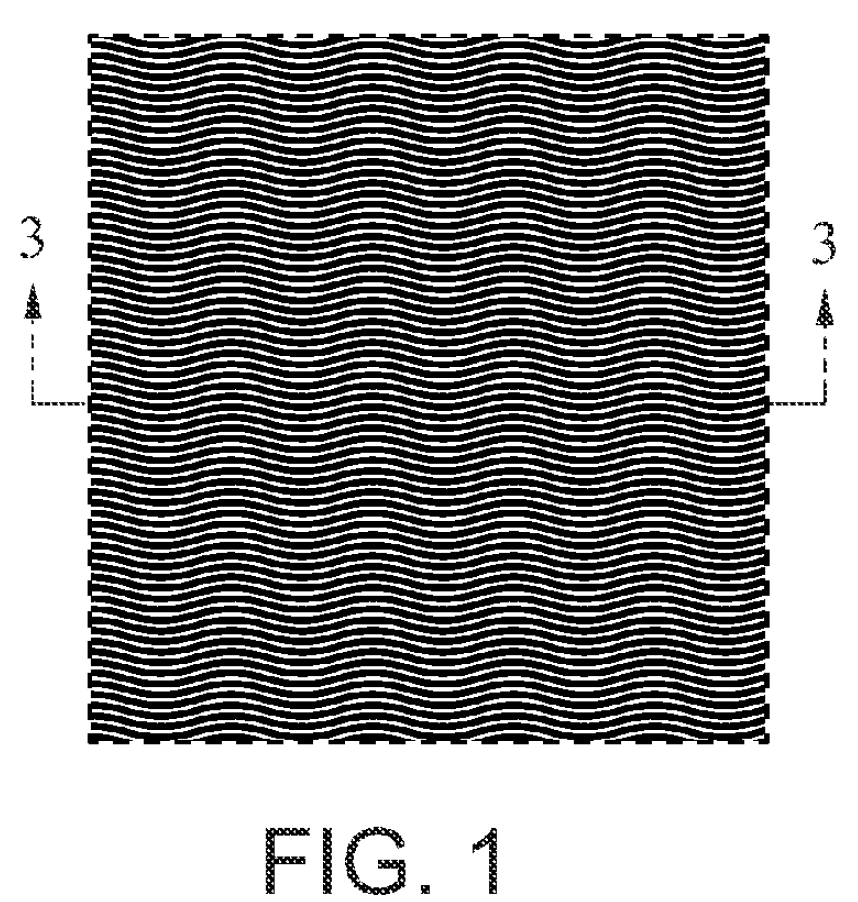
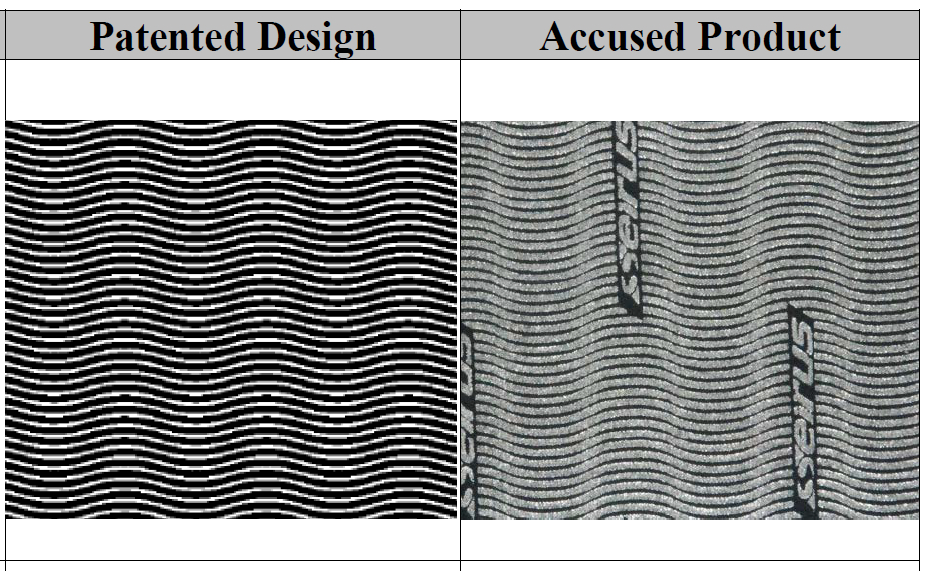
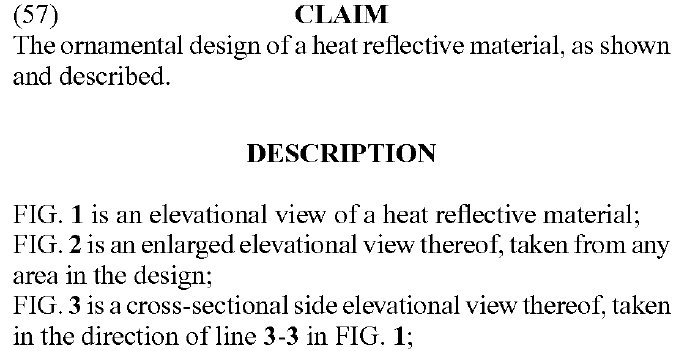
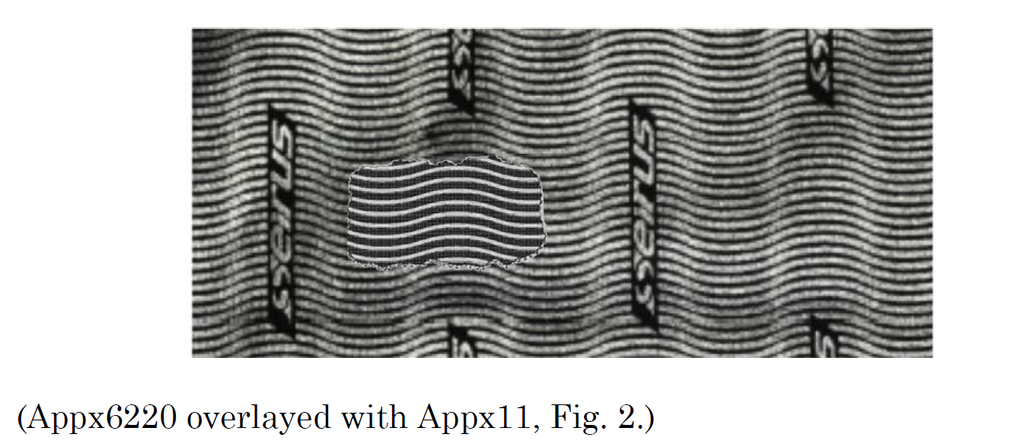
The district court declined to construe the design patent claim with a detailed verbal description in its Markman order, or to provide any other construction or guidance about design patent conventions, but instead later provided jury instructions that stated:
“A design patent’s claim defines what is covered by the patent. The claim is typically represented by illustrations. It is permissible to illustrate more than one embodiment of a design in a single design patent application. Each design patent contains multiple drawings to illustrate the claimed design.
The scope of the claim encompasses the design’s visual appearance as a whole. It does not cover a general design concept and is not limited to isolated features of the drawings. An inventor’s subjective intent is not relevant to the scope of the claimed design”
Quote from Jury Instruction No. 9 (as filed Aug. 6, 2021)
That jury instruction (No. 9) was largely generic. It could have been issued in any design patent case without changing a word. Neither the jury instruction nor the Markman order specifically addressed the proper interpretation of the language describing FIG. 2 quoted above, which is part of the claim. Most significantly, the jury was not instructed to disregard the presence of logos on the accused product (as Columbia had sought). But, additionally, the jury was not instructed about whether the asserted design patent actually included multiple embodiments or whether certain drawings showed the same design or merely incomplete portions of it. That meant that, in the Columbia case, there was no express “negative limitation” claim construction. Instead, everything came down to the comparison of the overall appearances.
“To determine infringement of a design patent, you must compare the overall appearances of the accused design to the Design Patent. The accused design is Seirus’s HeatWave fabric. If you find by a preponderance of the evidence that the overall appearance of the accused design is substantially the same as the overall appearance of the Design Patent, you must find that the accused design infringed the Design Patent.
Two designs are substantially the same if, in the eye of an ordinary observer, giving such attention as a purchaser usually gives, the resemblance between the two designs is such as to deceive an ordinary observer, inducing him to purchase one supposing it to be the other. You do not need, however, to find that any purchasers were actually deceived or confused by the appearance of the accused products. You should consider any perceived similarities or differences between the patented and accused designs. Minor differences should not prevent a finding of infringement.”
Quote from Jury Instruction No. 10 (as filed Aug. 6, 2021)
The jury instruction (No. 10) regarding the comparison step did mention the accused product by name. But otherwise that instruction is also fairly generic. Jury instructions nos. 11-13 also pertained to design-patent-specific issues, including comments about the proper use of prior art in instruction no. 11.
The district court could have provided further claim construction guidance. But it chose not to. As already noted, the jury held that the patented design was not infringed. On the next appeal, there will surely be a dispute over the ultimate verdict of non-infringement of the design patent, but also perhaps about the mostly generic jury instructions related to design patent claim construction and infringement analysis and how those impact any “negative limitations” in the design patent claim. Though, interestingly, at the district court neither party really argued this point regarding the proposed final jury instructions for the August 2021 trial (most of the arguments over those instructions instead centered around what could be ignored, proper consideration of marketing materials evidence, how functionality should be referenced if at all, and the relevance and proper role of alleged prior art).
Conclusion
The appropriate way to address “negative limitations” in design patent claims is: first, to address in claim construction any prosecution history disclaimer or prosecution history estoppel issues that might give rise to recapture issues around such “negative limitations”, as well as any relevant interpretations of the text of the claim (including the title and description) that might do the same; and, second, to articulate the way design features affirmatively present in the accused design represent significant differences from such “negative limitations” in the claimed design in an analysis that still mainly focuses on whether an ordinary observer would be deceived into thinking that the accused product’s design was the same as the patented design overall.
The first aspect might not be relevant in all cases. Those questions will be highly dependent on the content of the asserted design patent claim and the prosecution history. But the second aspect could potentially apply whenever the asserted design patent appears to recite, in part, a “negative limitation”. This second part might impact jury instructions, as well as the way a case is argued to the finder of fact. It could also impact a pre-suit opinion of counsel analysis. Both factors might come up as part of dismissal, summary judgment, judgment on the pleadings, and/or JMOL motions, as well as in appeals.
January 2022

Austen Zuege is an attorney at law and registered U.S. patent attorney in Minneapolis whose practice encompasses patents, trademarks, copyrights, domain name cybersquatting, IP agreements and licensing, freedom-to-operate studies, client counseling, and IP litigation. If you have patent, trademark, or other IP issues, he can help.


